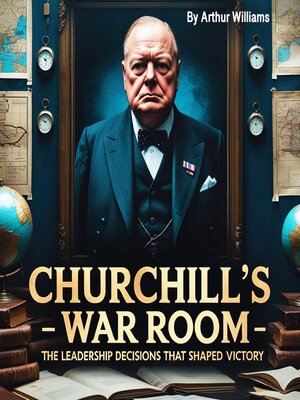Churchill's War Room
audiobook (Unabridged) ∣ The Leadership Decisions That Shaped Victory
By Arthur Williams

Sign up to save your library
With an OverDrive account, you can save your favorite libraries for at-a-glance information about availability. Find out more about OverDrive accounts.
Find this title in Libby, the library reading app by OverDrive.



Search for a digital library with this title
Title found at these libraries:
| Library Name | Distance |
|---|---|
| Loading... |
This audiobook is narrated by a digital voice.
Twenty-eight steps below the bustling streets of Whitehall, behind a nondescript door marked only with the innocuous sign "Government Offices," lay the nerve center of Britain's wartime resistance. The Cabinet War Rooms, hastily constructed in the basement of the New Public Offices building, would become the underground fortress from which Winston Churchill and his closest advisors would direct Britain's struggle for survival during the darkest days of World War II.
The decision to create this subterranean command center arose from the stark realization that modern warfare had fundamentally changed the nature of conflict. The devastating air raids of the Spanish Civil War and the early campaigns of World War II had demonstrated that no location, however prestigious or well-defended on the surface, could be considered safe from aerial bombardment. The traditional seats of power, with their grand windows and impressive facades, had become death traps in an age of strategic bombing.
Construction of what would officially be known as the Central War Room began in earnest during the summer of 1938, as the Munich Crisis made clear that European war was not a matter of if, but when. The Office of Works, under the direction of Sir Raymond Unwin, faced the monumental task of creating a bombproof facility capable of housing the highest levels of government while maintaining absolute secrecy about its location and capabilities.







